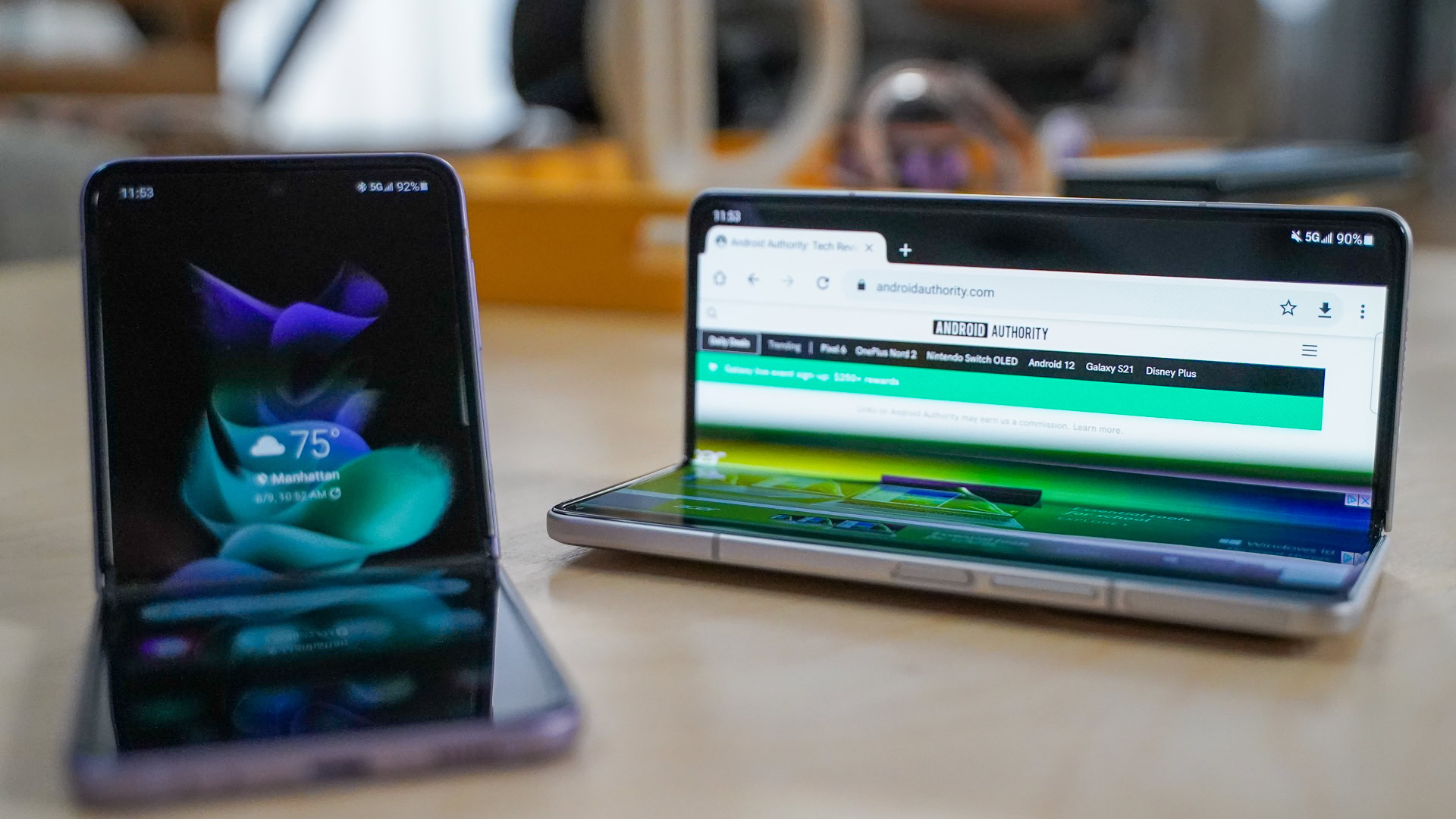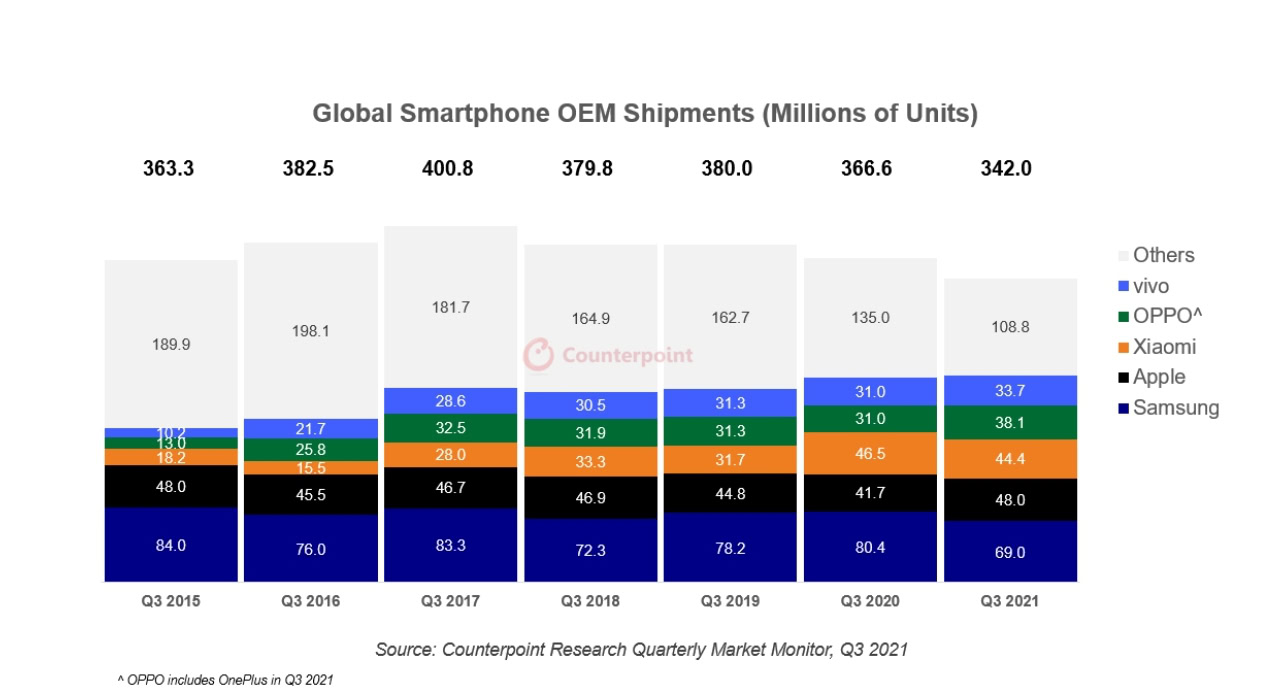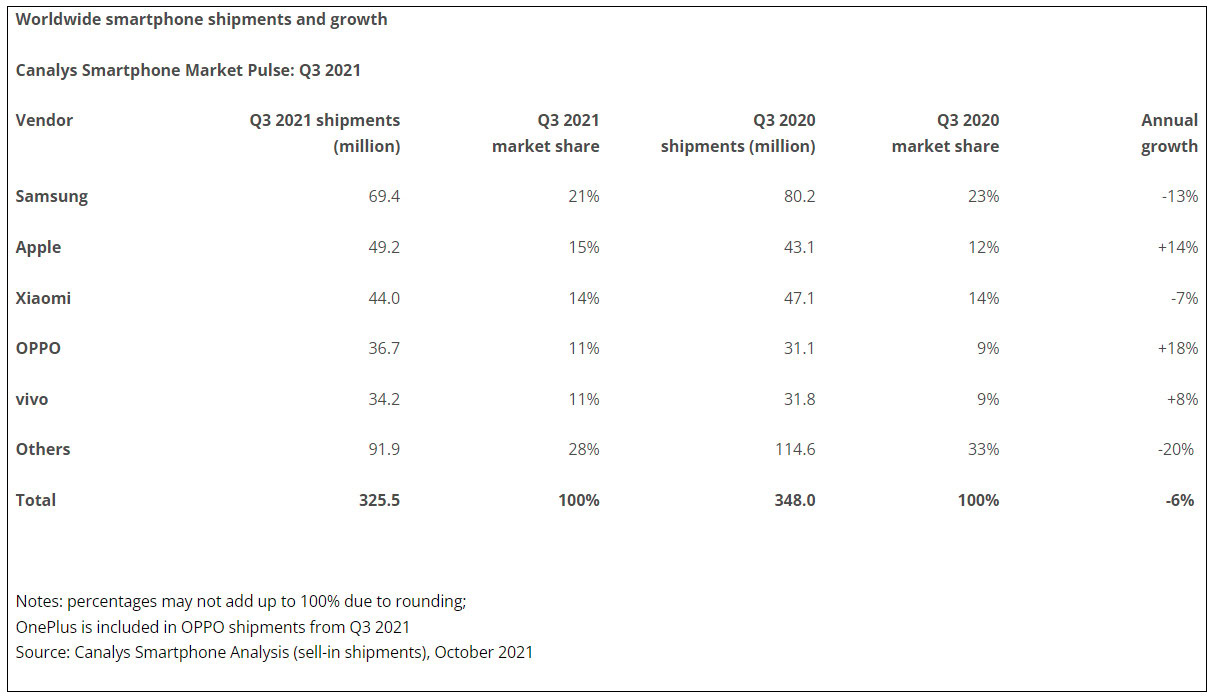Affiliate links on Android Authority may earn us a commission. Learn more.
The chip shortage hit hard in Q3 2021, but smartphone brands still coined it

- Counterpoint Research and Canalys have released their Q3 2021 smartphone market share reports.
- Both reports reveal a 6% yearly decline in shipments.
- Revenues are reportedly up 12% year-on-year due to a focus on mid-tier and premium devices.
The global chip shortage has been with us for a while now, resulting in smartphone companies being unable to quite meet demand. Now, Canalys and Counterpoint Research have revealed their global marketshare reports for Q3 2021, and it’s clear that the shortage has affected sales.
Both research firms reported a 6% yearly decline in shipments over Q3 2020, confirming that the chip shortage was to blame. Samsung remained at the top of the pile according to both reports, but Apple passed Xiaomi for second place. Otherwise, Xiaomi occupied the third spot, followed by OPPO and vivo.
The two research firms also revealed that Apple, OPPO, and vivo were the only companies in the top five to see any yearly growth. Canalys in particular noted that Samsung struggled with the supply of Galaxy A series phones, and that Xiaomi’s strong performance in Q2 2021 resulted in a shortfall of stock for Q3.
Canalys also noted that Apple’s strong performance was due to the iPhone 13 series release as well as discounts on the iPhone 12 range. OPPO and vivo are said to be bouncing back after COVID affected South Asian markets in Q2.

Meanwhile, Counterpoint Research also revealed that despite the shipment decline, the industry saw record third-quarter revenue of over $100 billion (up 12% year on year). The tracking firm noted that the chip shortage has resulted in increased pricing for components, with some phones seeing price increases as a result. This apparently affected the low-end segment the most.
“As a result, market demand was met by mid- to high-tier smartphones that helped drive the quarter to a record revenue even with the declining shipments,” Counterpoint explained.
In other words, even though manufacturers aren’t able to offer as much volume compared to a year ago, they’re bringing in more money due to sales of pricier devices.
